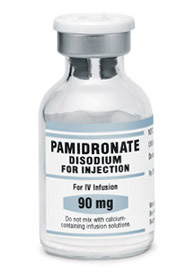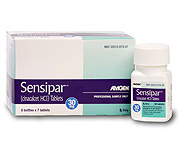Preparation for Parathyroid Surgery
Approximately 15% of patients present with a serum calcium level greater than 3mmol/l, which raises the anaesthetic and surgical risk. The aim is to make the patient safe for surgery, but the extent of preoperative preparation to lower the serum calcium depends on the severity of the disease and the surgical approach used.
Mild or moderate cases
In the more common mild or moderate cases with calcium below 3 millimoles per litre (12 milligrams per l00 ml) sensible intake of fluid with restriction of cheese and other dairy products is all that is needed. Whether the operation is under general or local anaesthetic it is mandatory to fast for six hours prior to surgery.
Because the surgery involves operating near the voice box nerves (recurrent laryngeal nerves) it is advisable for the voice box to be checked by a simple telescope test (indirect or direct laryngoscopy). This is especially important if there has been previous surgery on the neck.
Severe cases
In severe cases with a grossly elevated calcium the patient is at higher risk of cardiac arrhythmias during anaesthesia so the calcium must be lowered prior to surgery. This may mean admission to hospital for hydration using an intravenous saline drip, as increasing oral fluid intake is rarely sufficient. This may mean several days in hospital prior to surgery, with both IV fluids and diuretics.
 In very severe cases the drug pamidronate disodium can be given intravenously; this drug has the unique ability to bind to bone crystals and stops the leeching of calcium from the bones into the blood. Pamidronate is very effective and the serum calcium level usually drops to normal within 24 to 48 hours, but it has a long-lasting effect that carries on well after surgery. This usually means that calcium supplementation will be needed for many weeks postoperatively.
In very severe cases the drug pamidronate disodium can be given intravenously; this drug has the unique ability to bind to bone crystals and stops the leeching of calcium from the bones into the blood. Pamidronate is very effective and the serum calcium level usually drops to normal within 24 to 48 hours, but it has a long-lasting effect that carries on well after surgery. This usually means that calcium supplementation will be needed for many weeks postoperatively.
 The calcimimetic drug Cinacalcet (marketed in Australia as Sensipar) may be a better option in the preoperative lowering of calcium levels, as it is effective quickly and the effect is short-acting, however it is not currently licensed to be used in this way.
The calcimimetic drug Cinacalcet (marketed in Australia as Sensipar) may be a better option in the preoperative lowering of calcium levels, as it is effective quickly and the effect is short-acting, however it is not currently licensed to be used in this way.
Once the calcium has been brought under control, urgent localisation studies should be undertaken, and surgery planned to take place if possible during the same admission.

